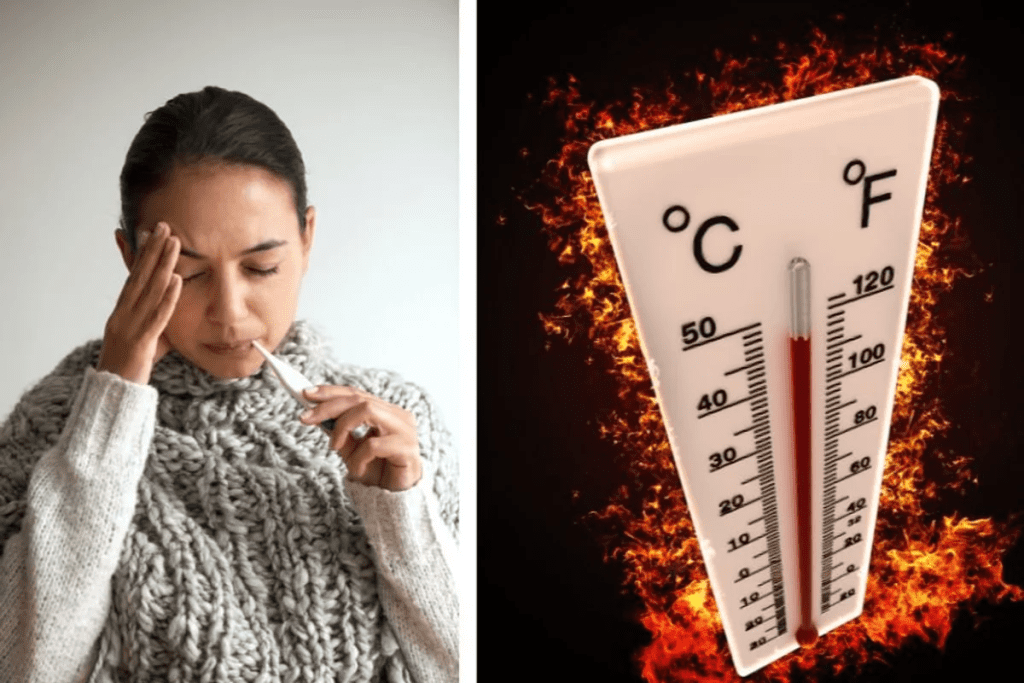For over a century, 98.6°F has been considered the gold standard for “normal” human body temperature. It’s the number most of us grew up memorizing in health class, the figure doctors referenced to detect fevers, and the benchmark that seemed set in stone. But here’s the surprising truth: that number might be outdated and our bodies are telling a new story.

The Man Behind the Myth: Carl Wunderlich’s 1868 Study
The 98.6°F benchmark originated in 1868 when German physician Carl Reinhold August Wunderlich analyzed temperature readings from 25,000 patients. Using a mercury thermometer and armpit readings (which are typically lower than oral ones), he averaged the results and concluded that 98.6°F was the baseline of a healthy human body.

For his time, the study was groundbreaking. But modern scientists have begun questioning the reliability of Wunderlich’s conclusions and their new findings are turning this long-standing medical assumption on its head.
We’re Actually Cooling Down: What Stanford Found
In a recent analysis conducted by Stanford University researchers, scientists discovered that the average body temperature of Americans has steadily declined over the last two centuries. Today, that average sits closer to 97.9°F nearly a full degree lower than Wunderlich’s original estimate.
Video:
The Average Human Body Temperature ISN’T 98.6°F Anymore
The researchers didn’t just test people once; they analyzed over 600,000 temperature readings spanning multiple generations, using modern, accurate thermometers and factoring in changes in demographics, gender, and health status.
So, what’s causing the drop?
Why Our Body Temperature Is Dropping
While it might sound concerning at first, the answer is actually good news for human health. The decline in average body temperature is largely attributed to:
- Lower inflammation levels: Thanks to antibiotics, vaccines, and cleaner living conditions, modern humans deal with far fewer chronic infections than our 19th-century ancestors.
- Better hygiene and sanitation: In Wunderlich’s era, people frequently battled conditions like tuberculosis, syphilis, and chronic gum disease all of which raised baseline body temperatures due to persistent inflammation.
- Improved living environments: Homes today are insulated, climate-controlled, and built with comfort in mind. Our bodies don’t need to work as hard to regulate internal temperature, which may contribute to the cooling trend.

A Personalized Approach to “Normal”
Perhaps one of the most important takeaways from recent research is that there’s no universal “normal” temperature. Your body temperature can fluctuate throughout the day and is influenced by:
- Age – Older adults generally run cooler.
- Gender – Women tend to have higher temperatures due to hormonal fluctuations.
- Time of day – Temperature is typically lowest in the morning and highest in the late afternoon or early evening.
- Activity level – Physical exertion or stress can temporarily raise your body temperature.
So, if you check your temp and see 97.5°F one morning and 98.4°F the next evening, don’t panic. You’re likely just witnessing your body’s natural rhythm.

Rethinking the Fever Standard
The shift in understanding has also forced doctors to reconsider what defines a fever. In the past, anything above 98.6°F could set off alarms. Now, healthcare professionals use a broader range typically 99.0°F and above as a more reliable threshold, depending on symptoms and context.
Video:
Breaking the Myth: Normal Human Body Temperature Isn’t Universally 98.6°F
In fact, modern medicine views body temperature more like a spectrum, not a rigid number. Most healthy people fall somewhere between 97.0°F to 99.0°F, and what’s “normal” for one person may be high or low for another.
Why This Matters for Everyday Health
This evolving understanding has real-world implications. Knowing that your baseline body temperature is personal means:
- You’re better prepared to identify early signs of illness like an unusually high or low reading for you.
- You can avoid unnecessary worry over small variations.
- You’re less likely to overuse medications like acetaminophen when a slight rise in temperature isn’t actually a cause for concern.

The Takeaway: Numbers Change, But Awareness Matters
The idea that “normal” body temperature is 98.6°F is a legacy of the past. Thanks to modern research, we now know that the human body isn’t quite so predictable and that’s a good thing. It shows how our environment, medical care, and quality of life are shaping our biology for the better.
So next time your thermometer reads something below 98.6°F, don’t be alarmed. Instead, take a moment to appreciate the quiet transformation happening inside us all one degree at a time.


